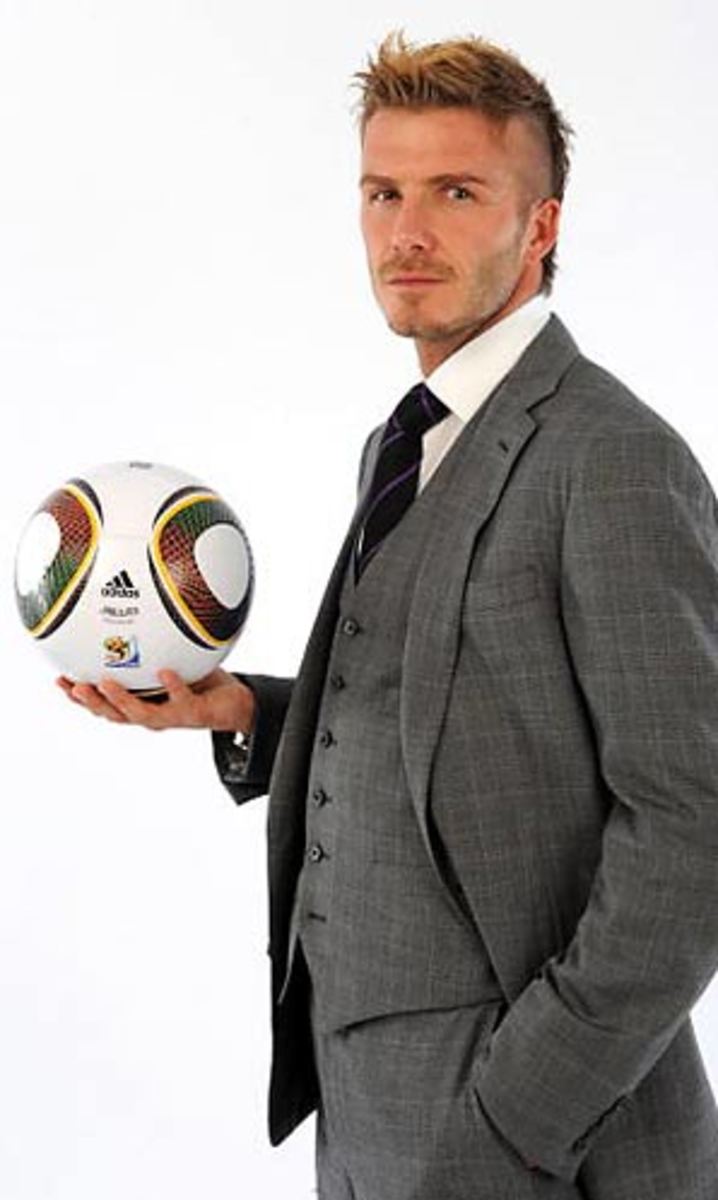New World Cup ball likely to draw less criticism than its predecessor
Earlier this year, the official World Cup match ball was revealed in South Africa: there were dancing girls, flashy stage lights, and David Beckham. It will retail for around $120 -- even replicas will cost about $23. It is all a long way from the inaugural competition in 1930, when Fifa gave so little thought to the match balls that finalists Uruguay and Argentina quarreled over whose they would use. In the end they tossed a coin, argued a bit more, and ended up playing one half with each. Argentina's ball was bigger, but back then, balls were simple leather and laces contraptions that were not too varied. Even by 1966, when England played with Slazenger's special edition, the ball was still fairly simple.
That all changed in 1970, when adidas stepped in to create the first official World Cup match ball, the iconic Telstar -- so named because this was the first World Cup to be broadcast live on television. The mixture of black and white panels was designed to make it easier to see on a black and white TV, but would become the standard design for footballs everywhere. Since then, each tournament has delivered a new ball with something that bit more swish: the 1982 Tango Espana featured water-tight seams, to stop wet weather making the ball heavier and more difficult to control; by 1986's Azteca, adidas had switched to synthetic materials to further reduce the impact of environmental conditions; USA 1994 brought us the Questra, with its added foam layer apparently making it easier to control.
In 2006, the Teamgeist abandoned the traditional 20 hectagonal panels for 14 thermally-bonded panels that made the ball almost perfectly round. Adidas called it "unprecedented." So when this year's Jabulani (meaning to celebrate in Zulu) was launched boasting "radically new technology," you had to wonder how much more radical a ball could get. Of course there is always the p.r. spiel about symbolism in the design -- apparently the Jabulani's 11 colors represent the passion and vibrancy of the host nation, as well as the fact that it is adidas' 11th World Cup match ball, there are 11 players on each side, and that there are 11 tribes and 11 official languages in South Africa. But is a ball not still a ball?
It seems not. Since 2006, adidas has been working with scientists -- proper scientists called Dr. something -- at one of the UK's sportiest institutions, Loughborough University. Before it even gets to the feet of testers like Frank Lampard and Petr Cech, these scientists have robots and wind tunnels to see what all kinds of tinkering does to the new ball.
This one has just eight panels, which are 3D, and spherically together in a perfectly round fashion. According to Dr. Andy Harland of the university's Sports Technology Research Group: "You don't get the differences in stiffness or response that are a function of the material and the stitching arrangement around the ball; wherever you kick it, you are going to get a very similar response."
The surface of the Jabulani also has lots of little grooves in it (or what they call a "Grip'n'groove profile") that makes it aerodynamic as well as easier to grip. "[The grooves] are to make sure that the ball is much more symmetrical in flight, and so it flies in a much more controlled way," says the aptly-named Dr. Martin Passmore, whose Department of Aeronautical and Automotive Engineering have tested the ball in a wind tunnel to make sure. The Teamgeist was heavily criticized by goalkeepers -- notably Germany's Jens Lehmann -- before the last World Cup because they felt that the ball's movement through the air was as unpredictable as a baseball (which only has two panels, so it's much easier to curve through the air. Dr. Passmore insists: "[The Jabulani] gives the control back to the players."
FIFA has strict regulations on the dimensions of its match balls, which have to be between 420g and 445g in weight, and between 68.5 cm and 69.5 cm in circumference. The Jabulani is a hefty 440g and measures 69cm. Using a robot to repeatedly mimic free kicks, shots, corners and passes, Loughborough's scientists are satisfied that they have, according to adidas' Thomas van Schaik, "created a ball that is small and heavy, allowing for maximum accuracy, perfect grip and exceptionally stable flight."
"Players can exhibit great skill when they kick balls like this," said Dr. Harland. Once the robot had finished with it, players including Kaka, Michael Ballack, Lampard and Cech got the chance to try it out.
"It's a very strong ball, true to hit. It's got a nice bounce to it," said Lampard. "When you catch it right it's going to fly." He even likes that groove business: "I hope it's going to help put a bit of movement on the ball, a bit of swerve." So will we have more groaning from goalkeepers this year? Not according to Cech, who says, "When it flies you can see it doesn't disrupt too much," looking a relieved man. "It is nice to catch, it feels good in the hands."
For us amateurs, it's hard to imagine that any of it could really make that much difference, but Lampard insists: "There is always a slightly different feel to the balls, they're always improving." We hear adidas is already working on "further innovations" to the ball for Brazil 2014.






